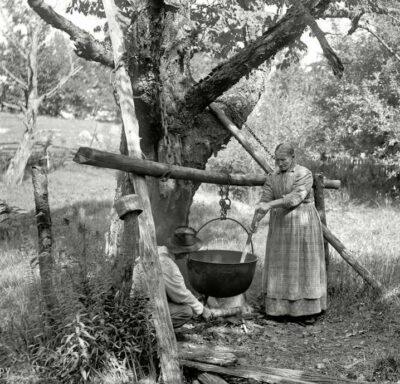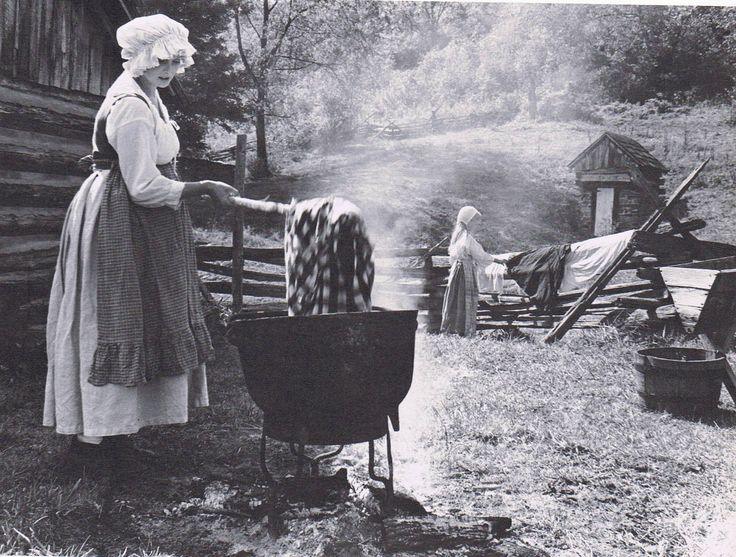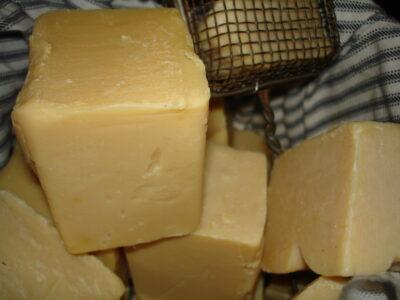Have you ever wondered what the best way is to make soap if you are living off the land?
The hard-working pioneers had to be resourceful and learn how to make their own soap from wood ashes and waste fats. They realized it’s easy to craft soap using the overflowing amount of hardwood ashes that built up in their daily fires, along with the ample amount of animal fat from the butchering of livestock they used for food.
For a lot of the pioneers, soap making became a semi-annual or yearly affair on the homestead. As the butchering of livestock occurred in the fall, soap was crafted at that time on many farms and homesteads to utilize the abundant supply of lard and tallow. For the homes that did not butcher their livestock for food, soap was generally crafted in the springtime, from saving the ashes from the wintertime fires and the cooking grease which they salvaged throughout the year.
How to Craft Good Old-fashioned Soap Directly in Your Pan
For all the campers out there, many likely have already discovered that by just throwing some white ashes into the hot frying pan, the lye from the ashes will combine with the fat or oil in the pan to form a crude soap.
Emergency Backup Power In The Palm Of Your Hand
This is an excellent way to wash out that dirty frying pan. However, this is not a great way to make enough soap to say, go take a bath.
How to Craft a Larger Amount of Soft Soap
Step One: Saving up Supplies
- Wear goggles and gloves.
- Boil the white ashes from hardwood fires in a little bit of water for about ½ an hour. Rainwater is said to be the best because it is considered to be soft water.
- Let the ashes settle to the bottom of the pan.
- The liquid lye will float to the top. Skim this off of the water. Save it in a container.
- You will need to do this daily until you have a nice amount saved up.
- At the same time, you want to be keeping any leftover cooking lard from your everyday This includes solid animal fats from your food and animal lard from cooking.
- When you have saved up enough of both, you are ready to begin old-fashioned soap making process.
 Step Two: the Soap-Making Process
Step Two: the Soap-Making Process
- You will need to find a pan or pot that is not aluminum. This is important because this process will eat through aluminum. You want this first pan or pot to be large enough to boil your lye in, and then add the hot grease to, as discussed in a later step.
- Begin by boiling the still weak lye that you have been saving. (It is said that you should boil it down until you can float an egg on it. Now, I know that not everyone always has an egg on hand, so improvise here!)
- Now put the fat, lard and oils that you have saved up into a separate pot. Depending on how much you have actually saved up, you might want to use a large pot or kettle for this. Make sure not to go over the halfway point of the pot you are using because you don’t want the fats to bubble over.
- Heat the fats until all of the water has been rendered out. This is especially important if you have solid fats.
- You should still have the lye going at a slow boil in the other large pot. Now, you want to slowly stir in the new, hot, clean cooking grease into the lye. Slowly! Keep stirring until the mixture becomes a consistency of mush.
- Save any extra, clean grease to use next time.
Step Three: the Pouring
- You will need to have ready a wooden box of sorts if you want to pour this into an actual bar. If not, any container will do.
- Cover whatever container you have in grease. so that the mixture won’t stick to the container.
- Pour the mixture into the container.
- Let it cool and set.
- This mix will turn solid but remain soft. Use a knife to release it from the container, if needed, or chop it up into usable pieces depending on your needs.
- Now you have soft good old-fashioned soap!
How to Craft a Harder Form of Soap
Some people might want to harden up their crafted soap a bit more. Here’s how:
- You make it exactly the same way, but you will need to add salt to the mushy mixture before pouring.
- Add about a cup of salt for each gallon of mix. Proportion this amount as needed ─ if you make a ½ gallon, use ½ a cup of salt, and so forth.
- Pour into a greased container, let it cool and then set before cutting it out with a knife.
- You can cut it up into blocks or pieces, depending on your needs.
For homesteaders and outdoorsmen alike, making soap from what you are already using in nature is convenient — and costs you nothing.
What advice would you add? Share it in the section below:




























